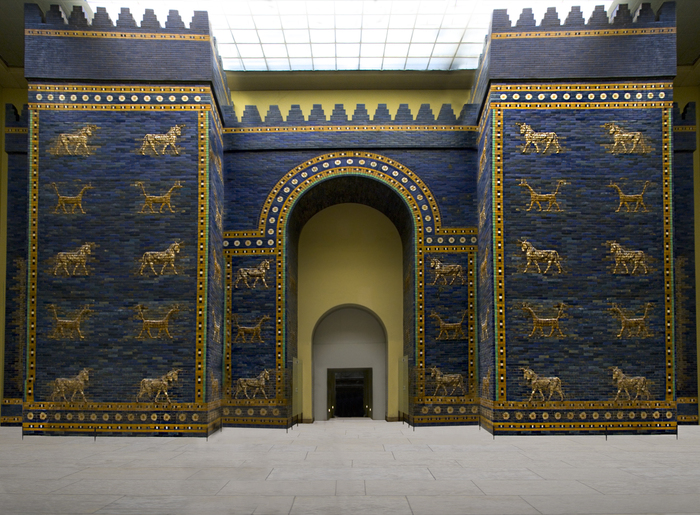The analysis of the signs impressed by the earth's magnetic field during the making of the bricks made it possible to reconstruct the history of the Gate of Babylon, built by King Nebuchadnezzar II and preserved in Berlin, in the Pergamon Museum.
Archeomagnetism has thus made it possible to confirm that the monument was built after the conquest of Jerusalem in 586 BC. Published in the magazine Plos One, the result is due to research coordinated by Italy, with the group of the National Institute of Geophysics and Volcanology led by Anita Di Chiara, and in which the Pergamon Museum and the universities of San Diego and Tel Aviv participated.
The Gate of Babylon, also called the Gate of Ishatar, one of the most important deities of the Babylonian pantheon, is one of the best known and best preserved monuments of that ancient Middle Eastern civilization.
14 meters high and 11 meters wide, the entire structure is made of terracotta covered with colored enamels, mostly blue, and gold and bas-reliefs representing mainly plants and animals.
It is believed that the gate was built, both for defensive and cult purposes, by King Nebuchadnezzar II (reigning from 605 to 562 BC) in honor of the goddess of love and war Ishtar to celebrate the conquest of the city in 586 BC But according to archaeologists, various clues suggest that the door was actually built in several phases, at least three.
To give support to the scholars, some small fragments of the bricks were analyzed with the archaeointensity technique, i.e. the analysis of the strength of the Earth's magnetic field left 'impressed' in the bricks at the time of their manufacture.
"If the bricks had been produced at the same time - said Di Chiara - they would have recorded the same intensity of the magnetic field. If, vice versa, the values of the strength of the magnetic field measured in the laboratory were different, it would mean that they were manufactured at different".
The results, added the INGV researcher, "revealed that the intensity recorded is statistically indistinguishable and probably subsequent to the conquest of Jerusalem in 586 BC".
Generally archaeomagnetic dating has uncertainties of centuries because the variations in the Earth's magnetic field are very slow, but in this case the greater precision is due to an anomaly in the Earth's magnetic field called the 'Iron Age anomaly', characterized by a of the intensity that occurred very rapidly over a few centuries.
“The analyzes we carried out in the Paleomagnetism Laboratory of the University of San Diego - observes Di Chiara - revealed that the intensity recorded is statistically indistinguishable and probably subsequent to the conquest of Jerusalem which took place in 586 BC”.
Reproduction reserved © Copyright ANSA

